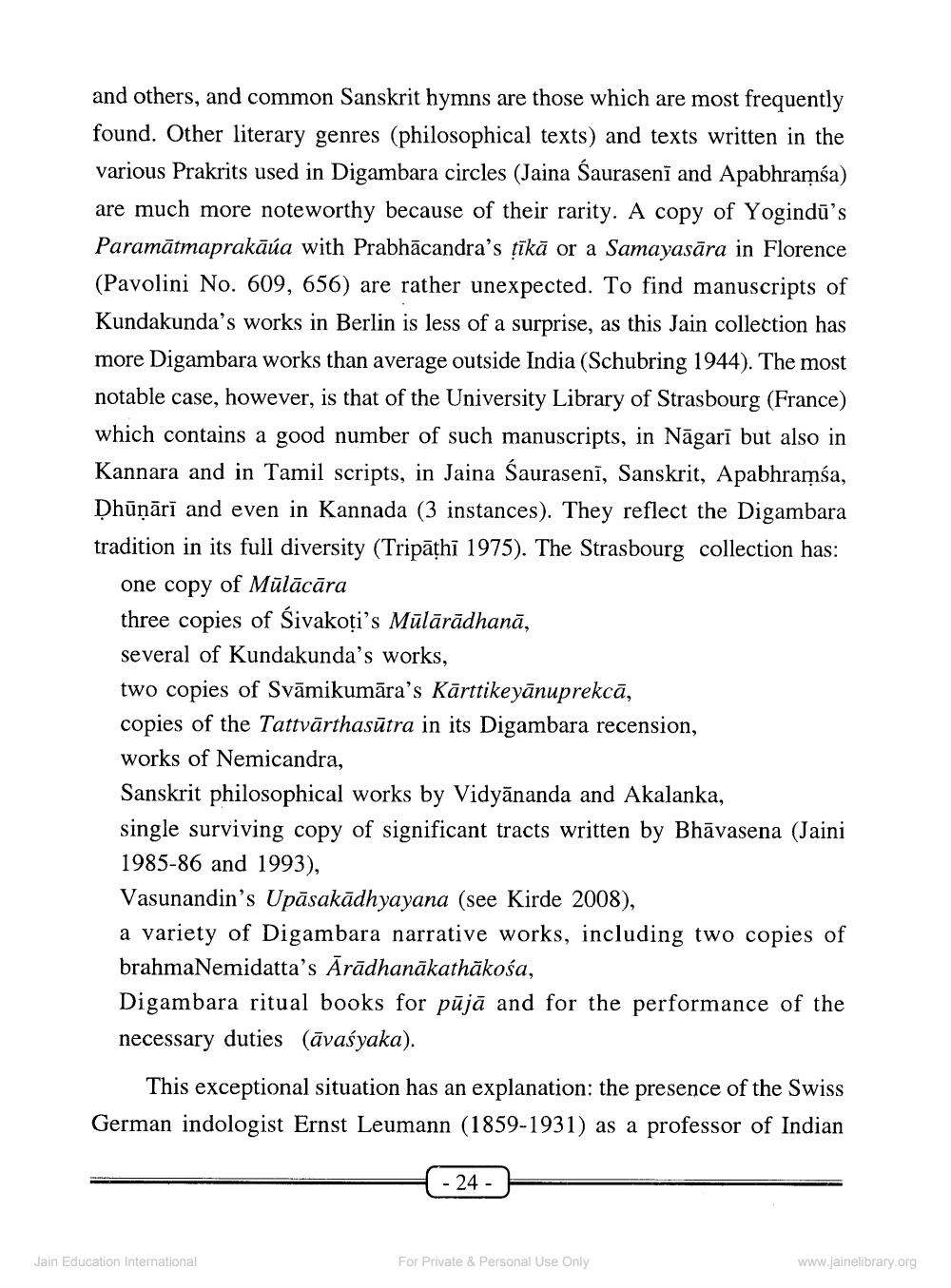________________
and others, and common Sanskrit hymns are those which are most frequently found. Other literary genres (philosophical texts) and texts written in the various Prakrits used in Digambara circles (Jaina Saurasenī and Apabhramsa) are much more noteworthy because of their rarity. A copy of Yogindū’s Paramātmaprakāúa with Prabhācandra's tīkā or a Samayasāra in Florence (Pavolini No. 609, 656) are rather unexpected. To find manuscripts of Kundakunda's works in Berlin is less of a surprise, as this Jain collection has more Digambara works than average outside India (Schubring 1944). The most notable case, however, is that of the University Library of Strasbourg (France) which contains a good number of such manuscripts, in Nāgarī but also in Kannara and in Tamil scripts, in Jaina Saurasenī, Sanskrit, Apabhramsa, Dhūņārī and even in Kannada (3 instances). They reflect the Digambara tradition in its full diversity (Tripāthī 1975). The Strasbourg collection has:
one copy of Mülācāra three copies of sivakoți's Mūlārādhanā, several of Kundakunda's works, two copies of Svāmikumāra's Kārttikeyānuprekcā, copies of the Tattvārthasūtra in its Digambara recension, works of Nemicandra, Sanskrit philosophical works by Vidyānanda and Akalanka, single surviving copy of significant tracts written by Bhāvasena (Jaini 1985-86 and 1993), Vasunandin's Upāsakādhyayana (see Kirde 2008), a variety of Digambara narrative works, including two copies of brahmaNemidatta's Ārādhanākathākośa, Digambara ritual books for pūjā and for the performance of the necessary duties (āvasyaka).
This exceptional situation has an explanation: the presence of the Swiss German indologist Ernst Leumann (1859-1931) as a professor of Indian
{-24 -
Jain Education International
For Private & Personal Use Only
www.jainelibrary.org




